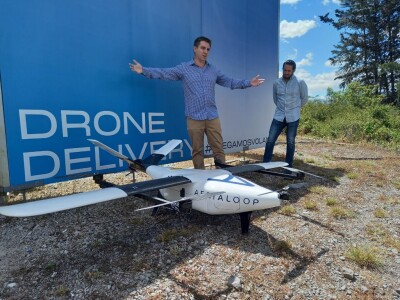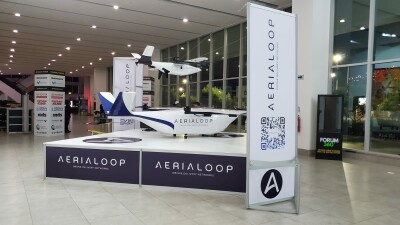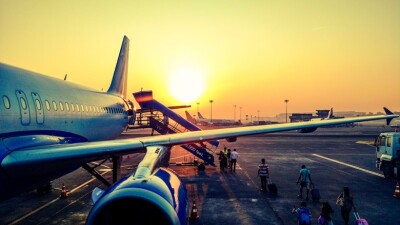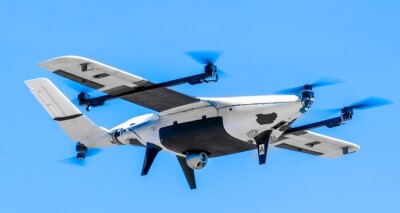At the onset of any new industry, technology takes a central stage as innovators and entrepreneurs find new and exciting ways to do something different or introduce a completely new way of doing things. The invention of the automobile, for example, was an exciting time when inventors all over the globe began adding steam and internal combustion engines to horse carriages, sans the beasts, and improvements to designs happened almost weekly. But it took the ingenuity of one man, Henry Ford, to transform a disorganized group of solitary creators into an industry that would eventually alter humanity forever.
The same is true for the uncrewed aviation industry, but in our case, we are living the process, and we do not have the luxury of history books to tell us what happened. Fortunately, the term “uncrewed aviation” applies to dozens of different sub-industries that are as different as a Corvette is from a delivery van.
One area that is developing rather fast is the use of small drones to deliver packages from a vendor to a consumer in a transaction that today might involve a two-ton truck with a dedicated driver and lots of waste. Companies around the world, especially in countries where the skies are not as busy, are developing, not only the technology but evolving business models in search of that elusive sweet spot that would transform a mom-and-pop shop into a multi-billion-dollar company.
Over the years, we have reported on the efforts of companies in Ecuador, Ireland, Australia, Colombia, Brazil, and many others, but the efforts of  Aerialoop in Quito, are not only evolving, but they have given them a rather unusual place amongst aviation businesses in Ecuador.
Aerialoop in Quito, are not only evolving, but they have given them a rather unusual place amongst aviation businesses in Ecuador.
“Believe it or not, we are now the airline with more daily flights in Ecuador!” said Pedro Meneses, CEO of Aerialoop. “With our new drone design, the ALT6-8, we can now fly hundreds of missions per day per drone without any downtime due to environmental conditions.”
Meneses is not only referring to the new uncrewed technology developed by his team, but also to the fact that the old delivery model of one departure point to one landing destination is being challenged in favor of a more effective but rather unusual way to distribute packages.
“We went back to the drawing board in every aspect of the operation,” Meneses said. “If we could find how to improve the aircraft, wasn’t it possible that the same would be true for the distribution model? And guess what? We found it! The old way of establishing departure and arrival points throughout the city worked for a certain size of the operation but was woefully inadequate to scale to thousands of flights.”
Over the years Aerialoop has cultivated a tight relationship with the Ecuadorian agency that regulates civil aviation, DGAC, in order to advance their ideas with respect to uncrewed aviation, an area in which most regulatory agencies around the world are not entirely comfortable. Now it was time to approach them again with a new idea.
“We thought it was time to rearrange our business model and for that we got together with the DGAC and made a bold proposal: we wanted to switch from single route point-to-point delivery scheme to a multi hub, network arrangement,” Meneses said. “They were receptive to the idea and eventually we received approval for the creation of six hubs and 16 commercially available routes between them, that would allow the ATL6-8 to make at least 300 flights initially on each route and eventually reach its design goal of 1,000 flights. Our true aim is to create Aerial Networks, not just make deliveries.”
The ultimate objective of every delivery company is to reduce the cost per package to the lowest possible value. In that respect, Aerialoop is no different. Their goal by improving vehicle and routing is $1.00 per flight for a 12 to 18 mile flight (20 to 30 kilometers).
“We are painfully aware that this is a hefty goal but are convinced that the improvements that we have made to the aircraft and the distribution model will give us the elusive $1.00/flight objective,” Meneses said. “We have redesigned our vehicle to have quadruple redundancy and now we are testing a ratio of three drones per pilot, with the final goal of 10 aircraft per operator. With all these improved efficiencies, we are squeezing every penny from the final cost and are convinced that our ultimate goal is achievable.”
The efficiencies that Aerialoop are achieving with their deep knowledge of aviation and business are not only affecting in a positive manner their bottom line, but it is also having an impact in the chaotic traffic in the city of Quito.
“We have studies that prove that 1,000 deliveries by drone will reduce the on-demand traffic in any major metropolitan area by 1%,” Meneses said. “Imagine what this would do, not only to the thousands of person/hours lost every day sitting in car, but to the pollution of the city and the savings in fuel also. This new industry is here to help with savings in multiple areas simultaneously in a win-win scenario. That might explain why the regulator is so willing to sit down and hear our arguments and our proposals.”
 One issue that still prevents this plan from becoming reality is the availability of the aircraft in sufficient numbers to be deployed in the new distribution scheme. For that, Aerialoop is also working on improving the current status quo.
One issue that still prevents this plan from becoming reality is the availability of the aircraft in sufficient numbers to be deployed in the new distribution scheme. For that, Aerialoop is also working on improving the current status quo.
“We are not necessarily a manufacturing company, but we were forced to design and build our own aircraft given the fact that existing drones are not sufficiently safe and appropriate for the task at hand,” Meneses stated. “We are convinced that all other companies in the world trying to attain the same efficiencies do not want to be in the manufacturing business either, and that’s why we have started conversations with drone delivery companies all over the world, offering our vehicles and our expertise to attain economies of scale for everyone. We can currently manufacture one aircraft per week, but our plans are for a much better output in the near term.”
Aerialoop is expanding into other Latin American countries but at the same time they are establishing relationships with world-renowned companies to extend their operations well beyond the Americas.
“We have an agreement with Anymile-Mitsubishi Electric to share our data, and that relationship has opened the possibilities to the entire globe,” Meneses said. “Our immediate plan is to open operations in a few countries including the USA and Medellin, Colombia. Our long-term outlook is way more international. We are very excited about our technology and our new distribution model.”
Meneses’ enthusiasm is contagious, and when Aerialoop’s numbers are scrutinized carefully, his optimism is not only based on solid figures, but on the fact that cities are dealing with a fixed ground infrastructure and a growing population, which is a model that is unsustainable. Drone delivery is one of the few bright spots in this difficult-to-solve urban conundrum.















Comments